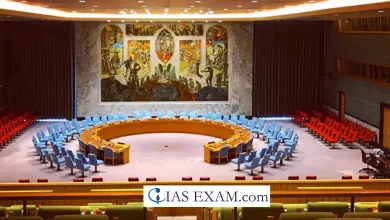Daily Current Affairs for UPSC
International Credit Card under the Liberalised Remittance Scheme (LRS)
Syllabus- Indian Economy [GS Paper-3]

Context- The Foreign Exchange Management Act (FEMA) has been amended by the Centre to include international credit card expenditures made outside of India in the Liberalized Remittance Scheme (LRS).
Key Highlights
- Additionally, from July 1, international credit card spending will be subject to a 20% Tax Collected at Source(TCS) rate.
What is Tax Collected at Source (TCS)?
- TCS is an immediate expense demand, which is gathered by the vendor of determined merchandise from the purchaser and kept to the public authority. Citizens can then guarantee discounts on the TCS demand at the hour of documenting expense forms.
Key Points About the Change
- The LRS now applies to credit card purchases made outside of India. This means that all residents, including minors, can send up to $2,50,000 (approximately Rs 2.06 crore) abroad per year without getting permission from the RBI.
- According to the Budget for 2023–2024, the levy of a higher TCS is made possible by bringing credit card transactions under LRS.
- Except for medical and educational purposes, such spending on overseas tour packages (without a threshold) or any other category (beyond the threshold of Rs 7 lakh) will be subject to a TCS of 5% until June 30.
- It will not apply to payments for foreign goods or services purchased from India.
What has changed?
- These regulations will assist in achieving international parity in the use of credit and debit cards, which were previously included in LRS.
- Likewise, the cases had come to see where the “LRS installments are lopsidedly high when contrasted with the uncovered wages”. It additionally explained that the LRS doesn’t cover business visits of the representative when the expenses are borne by the business.
Liberalised Remittance Scheme (LRS)
- The Reserve Bank of India (RBI) launched the liberalized remittance scheme (LRS) in India in 2004.
- A plan empowers Indian occupants to dispatch subsidies abroad for specific indicated purposes.
- One of the most important tools for facilitating capital flows into and out of India and for encouraging international trade and investment is the scheme.
- The Foreign Exchange Management Act (FEMA) of 1999 had previously placed a number of restrictions on the transfer of funds between India and other nations. This allowed individuals to pay for eligible transactions up to a maximum of USD 25,000 per financial year. The sum was hence expanded to USD 50,000 out of 2007 and further expanded to USD 250,000 out of 2013.
- The liberalized remittance program’s main goal is to make it easier for Indian residents to send money abroad without any problems by loosening up the rules on foreign exchange.
Foreign Exchange Management Act [FEMA]
- The Foreign Exchange Management Act (FEMA) was enacted in 1999 to regulate foreign exchange transactions within the nation.
- The RBI is the administrative body and assumes a controlling part in the administration of unfamiliar trade.
- The Demonstration accommodates an official and administrative structure, for inbound and outbound ventures, and works with exchange and business open doors among Indian and different nations.
- It makes provisions for transactions in the capital account and the current account.
- Capital account transactions are the only ones subject to FEMA restrictions. Current
- Account exchanges are free except if there is explicit limitation.





.png)



